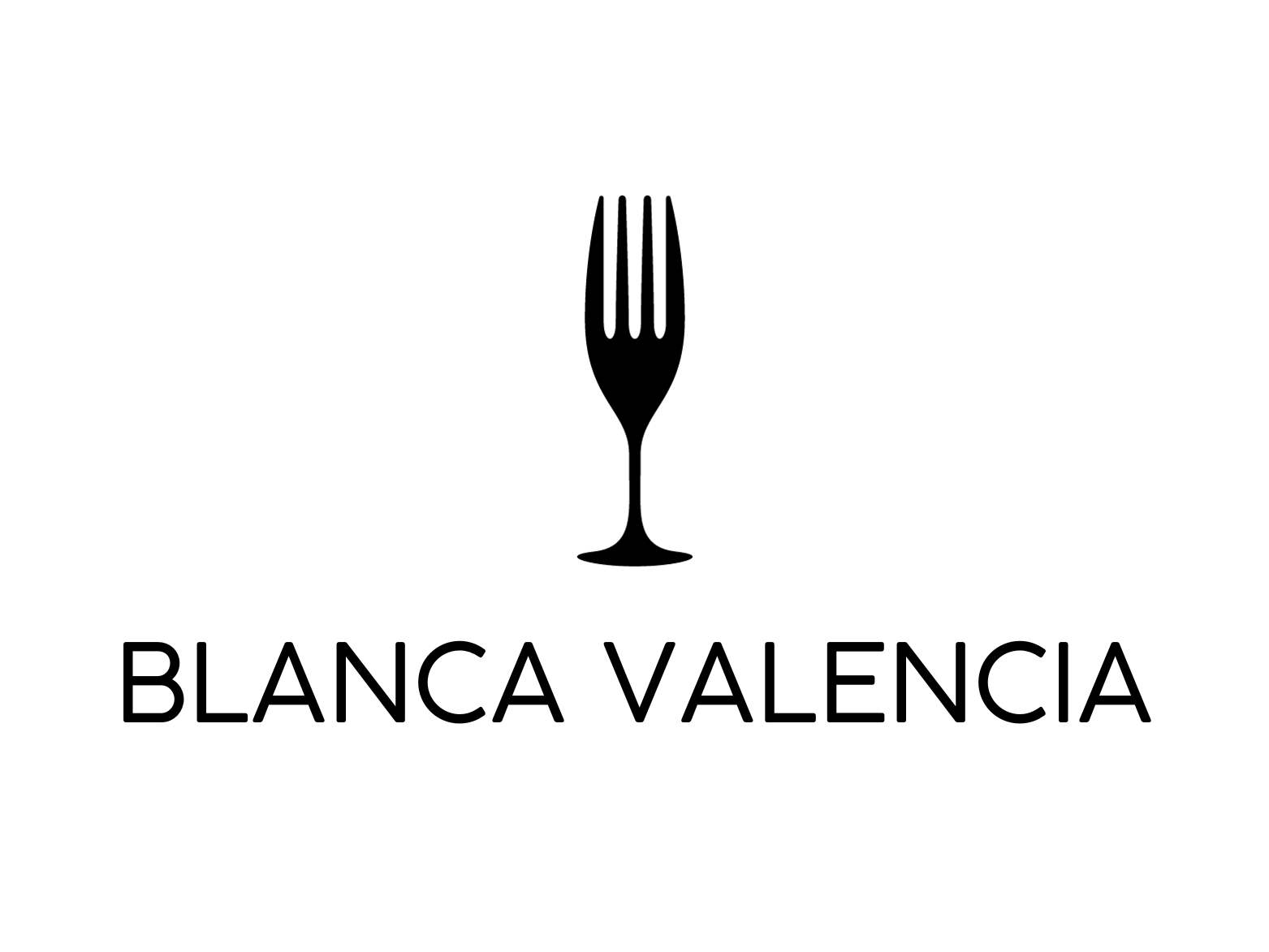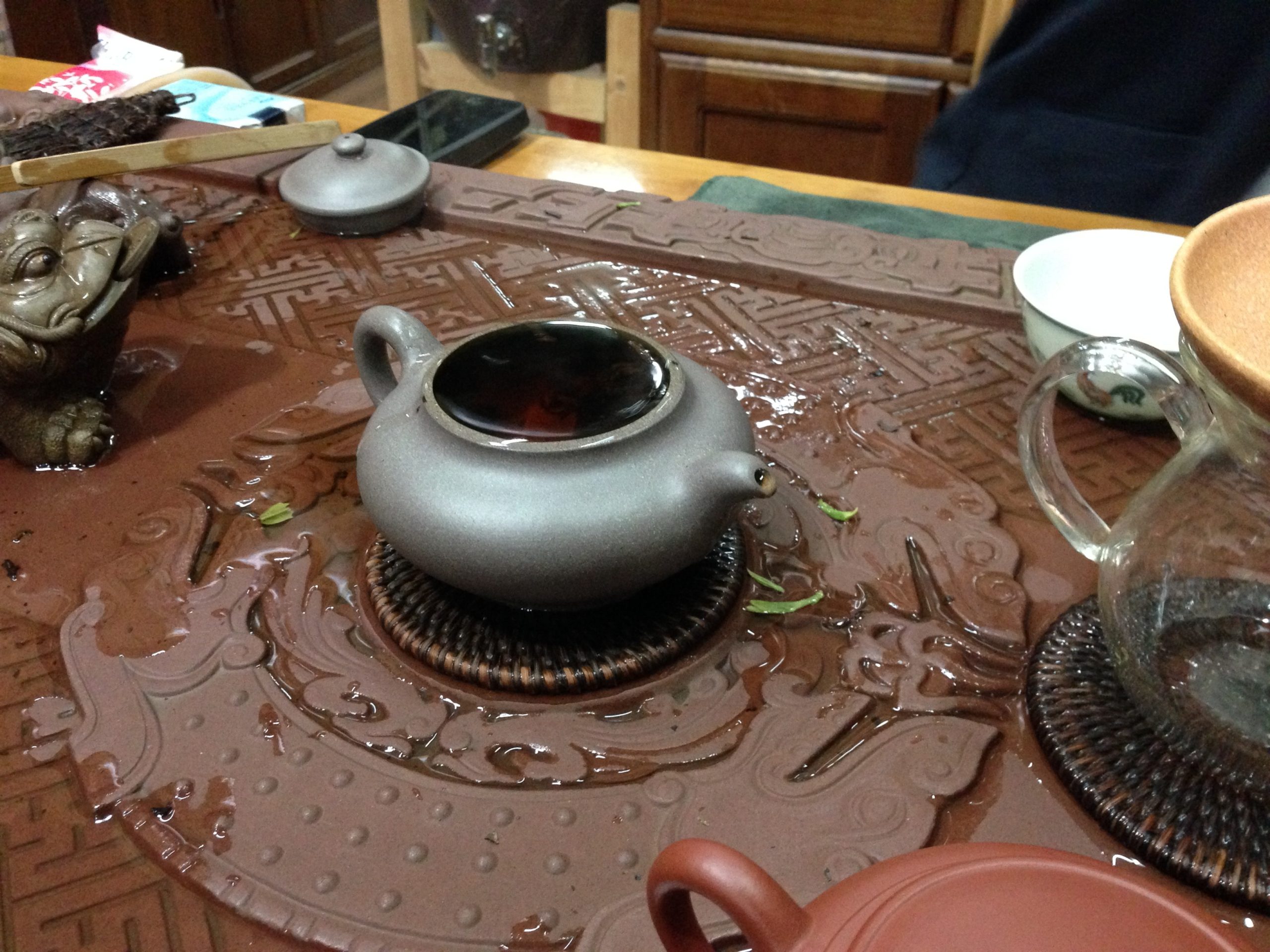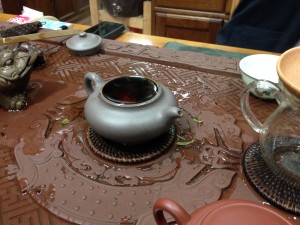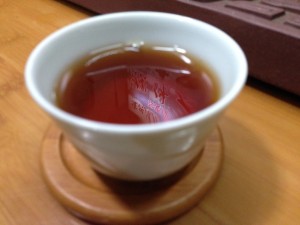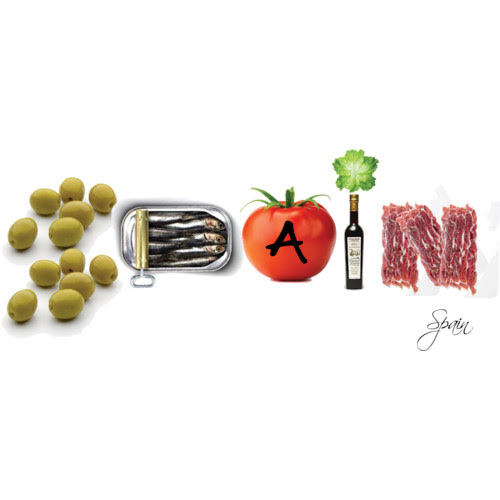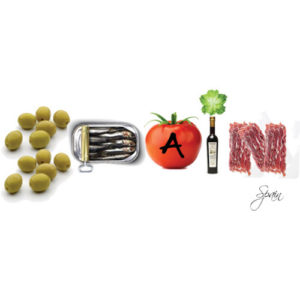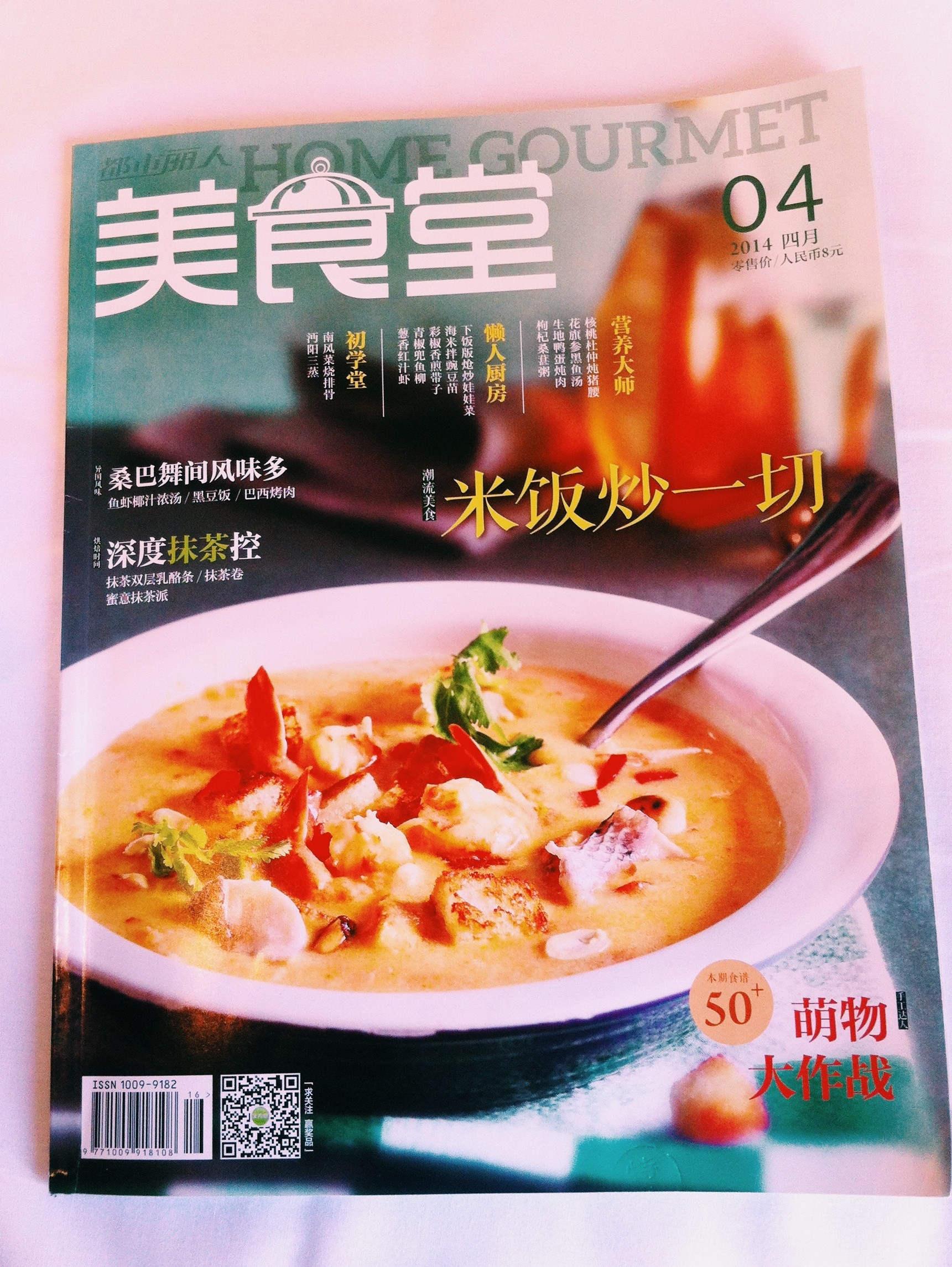My first introduction to tea was through the large pot that sat in the middle of our breakfast table for the first 20+ years of my life¹. Like most westerners, my family added milk and sugar to this to mask the fairly strong flavor. In my early 20’s, I next met “tea” in the US, when I stumbled across something called iced-tea, from a can… that was pretty horrific. Things started looking up in 2007, Blancs and I had a tea ceremony when visiting Beijing. I was impressed about the complexity (and science) behind what seemed like, up until that point, a relatively benign brewing process… who would have thought it was more complicated than throwing 2 bags in the bottom of a teapot and filling it full of boiling water? How interesting to know that green tea required water at a lower temperature and was best brewed in a glass cup. How odd to realize that black teas could taste better without milk and sugar!
Blanca sipping tea in Beijing (she still refuses to make this the photo for her website – I’m planning to start a public campaign at some point):
Fast forward a couple of years, B and I were living in Argentina. A friend of ours, Ale, patiently cured our mate over the course of a week or so and we were off and running. During our year there we loved the drink – it probably didn’t help Blanca’s caffeine intolerance, but it was an enjoyable way of bringing on heart palpitations. We left Argentina earlier than we wanted, so never developed our full-scale panza verde, but mate left an imprint on many friends. To this day, our friend, Flavia, still drinks it in London.
In true wannabe fashion; mate and thermos under my arm… I thought I was Uruguayo for a while:
Now that we’re living in China, it seems like a great opportunity to develop a lifetime addiction… let’s start how to brew a proper cuppa…
In contrast to the west, but similar to Argentina, the enjoyment is in the journey itself. I have friends who want nothing more than to spend their whole Saturday afternoon in their local teahouse. The process should be time-consuming. All the better to force us disconnect from the day-to-day and contemplate more profound things in life… like getting the news and stock updates on your iphone.
The pot is key in achieving this. It’s tiny. The general consensus is that it should be the size of your fist. This forces a number of things… an intense flavor, laborious brewing process, multiple brews and… patience. Yixing clay teapots are recommended for most teas (except white and green). They are better at holding the higher brewing heat and the clay actually absorbs the flavors and oils of the teas over time. The first step is to heat the pot. You next add the leaves. Typically you let them rest in the sealed pot for a while in order to absorb the heat and moisture. They’ll start to expand and release initial flavors after approximately 1 minute.
The first brew is typically fast and discarded. The most likely reason for this is also the least mystical; it’s to remove any dirt on the leaf from the harvesting process. The discarded water is used to heat the sipping cups (which are similarly small). The next brew (the first official brew) is the strongest, about 75% of the caffeine in the leaves is actually released in this brew. Brewing time depends on the leaves, Oolong and Puer are typically in the range of 30 seconds. You can overfill the pot slightly – this allows the liquid to spill, accelerating the process of absorbing flavor and color into the pot.
Subsequent brews follow a similar process – add the water, let is overfill in the pot, brew and serve. The leaves will mellow with subsequent brews, a good rule of thumb is to double the brewing time with each addition of water. You will notice is that the flavor of the tea will evolve over time – no two brews are the same. At the end (some leaves can support up to 8 brews) the utensils are cleaned with boiling water (never scrubbed or bleached) and left to drip dry in the tea tray.
The overall process is called gongfu (kung fu), similar to the martial art. Like many things in China, the name was applied so long ago that it’s exact origin has been lost, found, misinterpreted and corrupted many times in its long history. Some friends say this is because tea can make you strong and kung fu fighters drink it, others because “gong fu” means to “excel at”… with only exceptional tea resulting from the process.
Either way, it’s going to be a fun journey to addiction…
cheers, coops
¹ The Irish are the third largest consumers of tea, per capita, in the world – I don’t say that to add to either my credibility as author or consumer, well…
